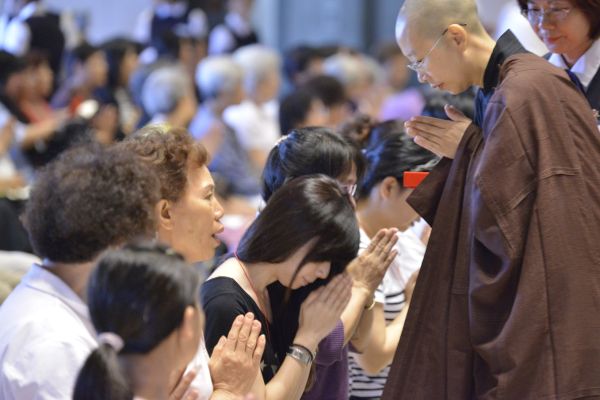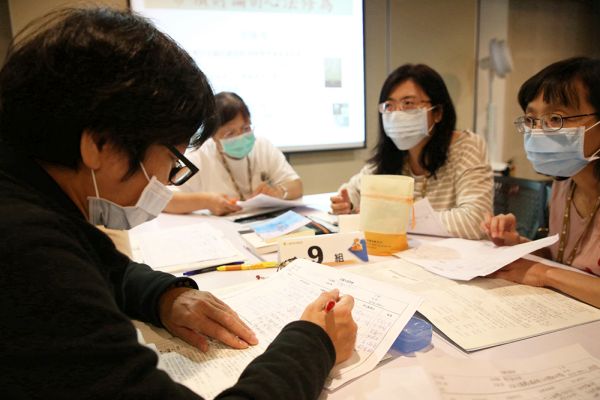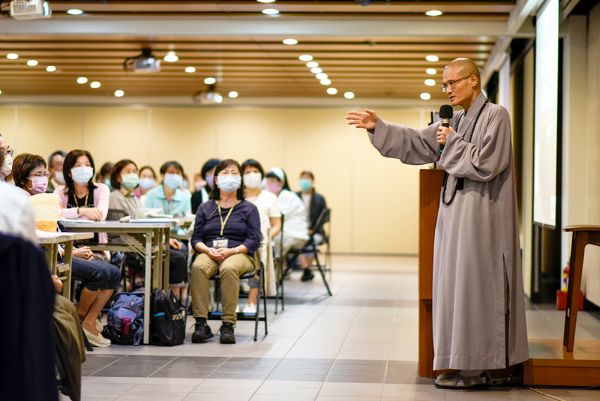Special Topics
Does Taking Refuge in Buddhism Mean Being A Monastic?
 Many people mistakenly think that taking refuge in Buddhism entails becoming a monastic. In fact, these are two different matters. When some celebrity takes refuge in Buddhism, it is quite often wrongfully reported in the media that he or she becomes a monastic, which is evidently incorrect.
Many people mistakenly think that taking refuge in Buddhism entails becoming a monastic. In fact, these are two different matters. When some celebrity takes refuge in Buddhism, it is quite often wrongfully reported in the media that he or she becomes a monastic, which is evidently incorrect.Aspiring to be a Buddhist
Taking refuge in Buddhism refers to returning to the Three Jewels and relying on their guidance and help for practice. One becomes a Buddhist officially after the Refuge Ceremony. In other words, one identifies oneself as a Buddhist through the Refuge Ceremony; it is out of one's own vow that one becomes a Buddhist.
However, taking refuge doesn't mean that one must become monastic. Most people who take refuge in the monastery are laypeople; after the ceremony, their family life goes on as usual. Everything remains the same, with the only difference being that they now have a clear goal in their religious belief and a right direction for their future life.
 Comparing to being a lay practitioner, being a monastic means to renounce one's secular family life. One has one's hair cut off, wears Kaṣāya, the robes of fully ordained Buddhist monks and nuns, and receives and upholds monastic precepts. At the time of Shakyamuni Buddha, his fourfold disciples included both monastic and lay, female and male. Among them, bhikshu refers to a male monastic and bhikshuni a female monastic, whereas a male layperson is called an upasakas and a female lay person an upasikas. After taking refuge in the Three Jewels, monastics have to take the bhikshu's or bhikshuni's precepts. On the other hand, laypeople take the Five Precepts. In all cases, taking refuge is the most fundamental for a Buddhist, either monastic or lay.
Comparing to being a lay practitioner, being a monastic means to renounce one's secular family life. One has one's hair cut off, wears Kaṣāya, the robes of fully ordained Buddhist monks and nuns, and receives and upholds monastic precepts. At the time of Shakyamuni Buddha, his fourfold disciples included both monastic and lay, female and male. Among them, bhikshu refers to a male monastic and bhikshuni a female monastic, whereas a male layperson is called an upasakas and a female lay person an upasikas. After taking refuge in the Three Jewels, monastics have to take the bhikshu's or bhikshuni's precepts. On the other hand, laypeople take the Five Precepts. In all cases, taking refuge is the most fundamental for a Buddhist, either monastic or lay.
Taking refuge is not equal to being monastic
Do not mistake taking refuge for being monastic, or vice versa. Certainly, one could choose to join the Sangha after taking refuge, and a so-called monastic must be someone who has already taken refuge. However, one is not obliged to become monastic after having taken refuge. As the majority of Buddhists are laypeople, if the Dharma was only available to the monastic, Buddhism would have long since disappeared. To benefit sentient beings in ways that are resonant with them, to help all improve their character, and to guide them along the correct path in life – this is the true purpose of the Buddha, the Dharma, and the Sangha.
After taking refuge, it is advisable to learn and practice Dharma, and to adjust one's attitude towards life and the way one conducts oneself accordingly. Taking refuge would not be meaningful only if one truly learns, upholds, and propagates Dharma.
After taking refuge, one should try to be a real Buddhist; otherwise, one would remain a nominal Buddhist, without benefiting from the refuge at all.
After taking refuge, it is advisable to learn and practice Dharma, and to adjust one's attitude towards life and the way one conducts oneself accordingly. Taking refuge would not be meaningful only if one truly learns, upholds, and propagates Dharma.
After taking refuge, one should try to be a real Buddhist; otherwise, one would remain a nominal Buddhist, without benefiting from the refuge at all.
